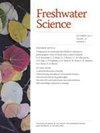Environmental factors structuring diatom assemblages in thermo-mineral springs of Sardinia, Italy
IF 1.6
4区 环境科学与生态学
Q3 ECOLOGY
引用次数: 3
Abstract
Thermal springs provide natural laboratories to test the responses of biological communities to various stressors. To date, little is known about how water temperature and chemistry influence the microalgal assemblages in these ecosystems, especially in the circum-Mediterranean area. In this study, we assessed the environmental drivers of benthic diatom assemblages collected from different substrates in 8 thermo-mineral springs of Sardinia, Italy, with a focus on temperature and conductivity. A total of 205 diatom species (67 genera) were found, of which 12 (8 genera) were centric and 193 (59 genera) were pennate. Composition of diatom assemblages was associated with temperature, pH, conductivity, bicarbonates (HCO3−), and sulfates (SO42−). Multivariate analyses also confirmed differences in species composition, richness, diversity, and evenness of diatom assemblages from groups of springs distinguished by temperature and conductivity gradients. We found higher species richness, diversity, and evenness in hyperthermal (water temperature = 52.7−71.5°C) and medium-mineral springs (conductivity = 590−1193 µS/cm). Our results indicate that thermal springs are not always inhospitable environments for diatoms. Springs with high water temperatures hosted rich and diverse diatom assemblages, likely thanks to their ecotonal nature and a combination of multiple local factors.构成意大利撒丁岛热矿泉硅藻群落的环境因素
温泉提供了自然实验室来测试生物群落对各种压力源的反应。迄今为止,人们对水温和化学物质如何影响这些生态系统中的微藻群落知之甚少,尤其是在环地中海地区。在这项研究中,我们评估了从意大利撒丁岛8个热矿泉的不同基质中收集的底栖硅藻组合的环境驱动因素,重点是温度和电导率。共发现硅藻205种(67属),其中中心硅藻12种(8属),三角硅藻193种(59属)。硅藻组合的组成与温度、pH、电导率、碳酸氢盐(HCO3−)和硫酸盐(SO42−)有关。多元分析还证实了通过温度和电导率梯度区分的泉组硅藻组合在物种组成、丰富度、多样性和均匀性方面的差异。我们在高温(水温=52.7−71.5°C)和中等矿泉(电导率=590−1193µS/cm)中发现了更高的物种丰富度、多样性和均匀性。我们的研究结果表明,温泉并不总是适合硅藻生长的环境。水温高的泉水中有丰富多样的硅藻群落,这可能是由于它们的生态环境性质和多种当地因素的结合。
本文章由计算机程序翻译,如有差异,请以英文原文为准。
求助全文
约1分钟内获得全文
求助全文
来源期刊

Freshwater Science
ECOLOGY-MARINE & FRESHWATER BIOLOGY
CiteScore
4.10
自引率
0.00%
发文量
49
审稿时长
6-12 weeks
期刊介绍:
Freshwater Science (FWS) publishes articles that advance understanding and environmental stewardship of all types of inland aquatic ecosystems (lakes, rivers, streams, reservoirs, subterranean, and estuaries) and ecosystems at the interface between aquatic and terrestrial habitats (wetlands, riparian areas, and floodplains). The journal regularly features papers on a wide range of topics, including physical, chemical, and biological properties of lentic and lotic habitats; ecosystem processes; structure and dynamics of populations, communities, and ecosystems; ecology, systematics, and genetics of freshwater organisms, from bacteria to vertebrates; linkages between freshwater and other ecosystems and between freshwater ecology and other aquatic sciences; bioassessment, conservation, and restoration; environmental management; and new or novel methods for basic or applied research.
 求助内容:
求助内容: 应助结果提醒方式:
应助结果提醒方式:


